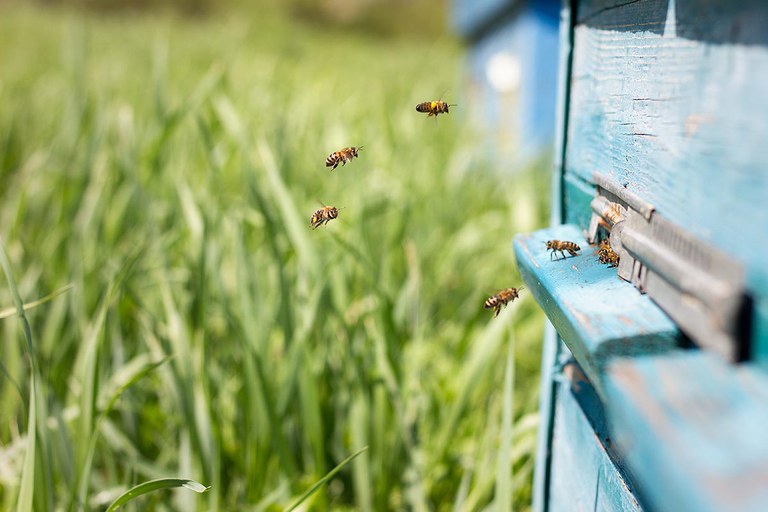Inexpensive technique provides a way to identify unknown viruses in bee populations
Problem
How can the spread of viral pathogens among bees be prevented?
Pollinators are experiencing population decline around the world.
Findings
An international team of researchers collected samples of DNA and RNA from twelve bee species in nine countries and then developed a novel sequencing technique to detect viruses. Researchers detected both known and twenty-seven never-before-seen viruses belonging to at least six new families.
Impact
This inexpensive and efficient technique allows researchers to monitor bee health around the world in order to:
- Identify additional unknown viruses in bee populations.
- Monitor imported bee populations for potential threat of virus transmission to local bees.
- Determine whether the viruses in infected bees are passed to crop plants.
Related Research Areas: Integrated Health Solutions, Environmental Resilience
Research Credit
Team
- Christina Grozinger, David Galbraith, Zachary Fuller, Allyson Ray, Maryann Frazier, J. Francisco Iturralde Martinez, Harland Patch, Cristina Rosa, Joyce Sakamoto, Scott Stanley, Anthony Vaudo, and collaborators from additional institutions
Participating Departments
Competitive Funding
- National Geographic Society; USDA Animal and Plant Health Inspection Service
Federal and State Appropriations
- USDA NIFA Hatch Project PEN04579, Accession #1004871
Emerging Discoveries
Scientists find evidence of 27 new viruses in bees
Published Research
Investigating the viral ecology of global bee communities with high-throughput metagenomics
-
Galbraith, D. A., Fuller, Z. L., Ray, A. M., Brockmann, A., Frazier, M., Gikungu, M. W., Martinez, J. F. I., Kapheim, K. M., Kerby, J. T., Kocher, S. D., Losyev, O., Muli, E., Patch, H. M., Rosa, C., Sakamoto, J. M., Stanley, S., Vaudo, A. D., & Grozinger, C. M. (2018). Investigating the viral ecology of global bee communities with high-throughput metagenomics. Scientific reports, 8(1), [8879]. https://doi.org/10.1038/s41598-018-27164-z
Office for Research and Graduate Education
Address
217 Agricultural Administration BuildingUniversity Park, PA 16802-2600
- Email agresearch@psu.edu
- Office 814-865-3136
Office for Research and Graduate Education
Address
217 Agricultural Administration BuildingUniversity Park, PA 16802-2600
- Email agresearch@psu.edu
- Office 814-865-3136



